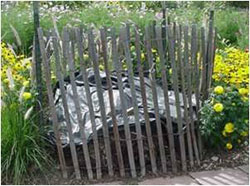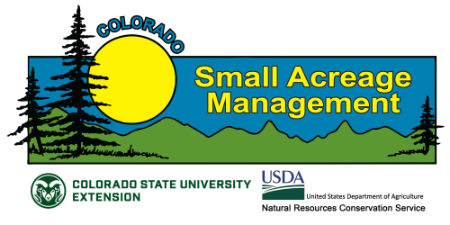 Example of garden compost bin. |
Composting is a wonderful strategy to create free and nutrient-rich soil usable in your garden and houseplants. Manure and bedding, household food waste, grass clippings, and leaves are perfect additions to a compost pile.
Worm Composting
- Success Tips for Vermicomposting
- DIY Worm Composting Bin – Vermicompost.net
Manure Composting
Manure from the barn can be composted. For compost to work, the proper ingredients are needed:
- About 30:1 Carbon: Nitrogen ratio. Carbon source (bedding, grass clipping, leaves, shredded office paper) and Nitrogen source (manure).
- Air, created by turning regularly
- Water to 50% (feels like a wrung out sponge).
- Time
- Bacteria that will break down the material. They are naturally occurring in soil and manure.
Locate your compost pile out of natural drainages and away from wells. Think about keeping the clean water from running through the pile when it rains or snow melts.
Build the pile layering bedding and manure. Throw in a little soil to introduce bacteria that will break down the material. Water and wait. Use a composting thermometer to gauge the inside temperature. When it reaches 140 degrees, give it a turn and water as needed. Let the temperature rise again and turn it. Do this through at least 3 heating cycles. Don’t forget to water if needed (you may even want to cover the pile with a tarp if it dries out too quickly). The manure should look like soil when it’s finished. Allow it to cure for 6 months before use.
CSU Factsheets
SAM Newsletter Articles on Compost
- Composting 101 – summer 2020
- The Facts About Compost Tea – spring 2016
- Manure: A Renewable Resource – summer 2010
- Reducing Your Trash – winter 2011
- Worms In My Kitchen – spring 2009

Example of manure composting system. Newest manure is added in the left bin. Finished compost is in the far right bin. Moving the manure will aerate the pile. Piles must also be watered.
Use a long composting thermometer to monitor the internal temperature of your pile.





